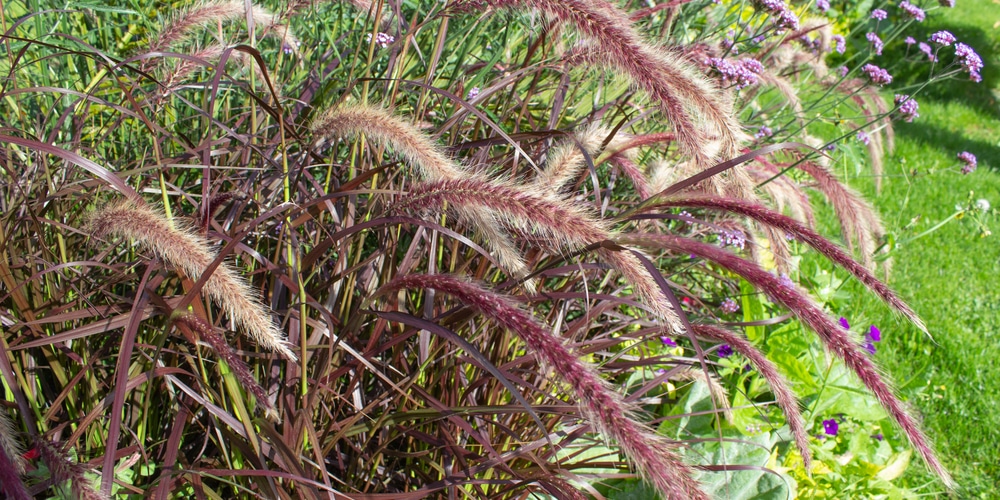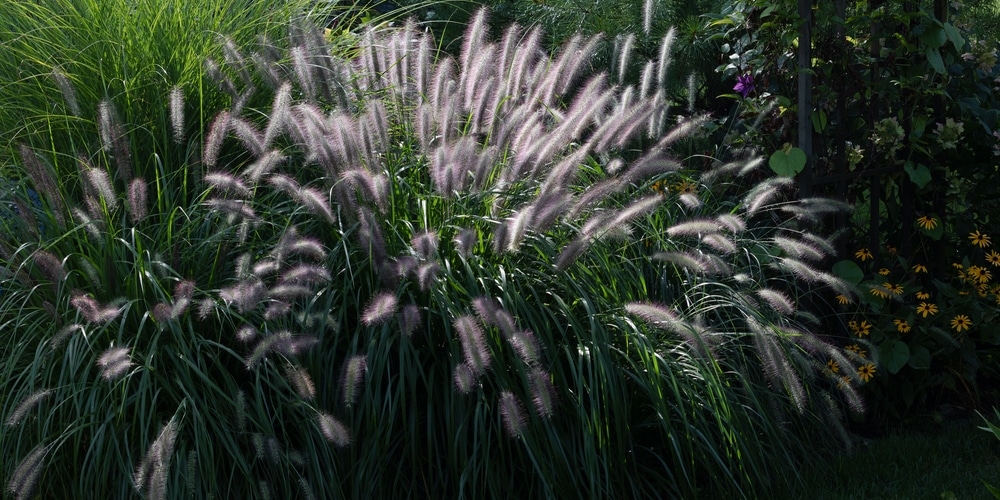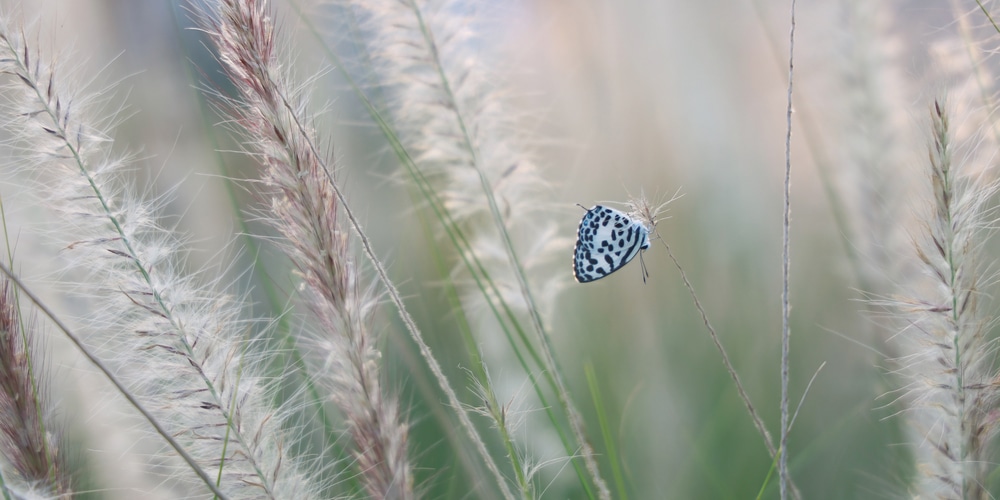Bottlebrush grass is a soft, delicate plant that can add a touch of elegance to any garden. Its long, slender leaves are perfect for adding a splash of color, and the delicate flowers can add a touch of whimsy.
Commonly seen and used in landscape gardening, bottlebrush grass can also be used as an accent in container gardens or as a groundcover.
While bottlebrush grass is very easy to grow, it does require a little extra care and attention to thrive. This guide will teach you everything you need to know about how to take good care of your bottlebrush grass.
| Botanical Name | Elymus Hystrix |
| Common Name | Bottlebrush Grass |
| Plant Type | Perennial |
| Flower Color | Bottlebrush-like blossoms in shades of pink or lavender |
| Size When Mature | 36 – 60 inches |
| Bloom Time | Early Summer |
| Sun Requirements | Full Sun / Tolerates partial shade |
| USDA Hardiness Zones | 2-8 |
| Soil PH Range | 6.0 – 7.5 |
| Soil Type | Neutral, moist, well-draining |
| Water Needs | Medium |
| Native Area | North America |
What You Need to Know About Bottlebrush Grass
If you’re looking for a grass that will attract wildlife to your garden, bottlebrush grass is a great choice. This grass is a favorite of songbirds, and its fluffy plumes make a perfect nesting material.
In addition to attracting wildlife, bottlebrush grass also has a number of other attractive attributes. It is an excellent choice for naturalizing, as it spreads quickly and easily.
This drought-tolerant grass can be grown in areas with limited water resources. Additionally, bottlebrush grass also makes a beautiful dried flower, and its long-lasting blooms make it a popular choice for cut flowers.
Prized for its stunning beauty, bottlebrush grass is a versatile plant that can be used in a number of different ways. Its leaves are a vibrant green, and the flowers range in color from white to pink.
Its bristly spikelets give the grass its name, as they form in various clusters along the stems. When in bloom, bottlebrush grass is truly a sight to behold. Though it is related to the common grass, it has a very different appearance.
The blades of the bottlebrush grass are much thinner, and they grow in a tight, compact mat. The flowers of the plant are small and delicate, and they range in color from white to pink. Bottlebrush grass is native to North America, and it thrives in warm, humid environments.
How to Care for Bottlebrush Grass
If you’re interested in growing bottlebrush grass in your garden, here’s everything you need to know about growing and caring for a thriving bottlebrush grass to add to your landscape.
Light
When choosing a location for your bottlebrush grass, be sure to choose an area that receives plenty of light. The plant does best in full sun, but it will also do well in partial shade. If you live in a particularly hot climate, you may want to provide some afternoon shade to prevent the leaves from burning.
In your yard, you can choose a spot that gets at least six hours of sunlight per day. While bottlebrush grass is often planted in landscapes and backyard gardens, it can also be grown in containers. Make sure that you place it in a spot where it gets plenty of sunlight. Rotate the container regularly to prevent the plant from becoming leggy.
Water and Soil Needs
Another important aspect of bottlebrush grass care is soil type. This plant prefers well-draining soil that is rich in organic matter. If your soil is heavy or clay-based, you may need to amend it before planting bottlebrush grass.
A good way to improve drainage is to add sand or perlite to the soil. You can also improve the quality of your soil by adding compost or manure.
Once you have prepared the soil, be sure to water it thoroughly before planting your grass.
To ensure that your bottlebrush grass thrives, measure your soil’s pH – it does well in a neutral range of 6.0 to 7.5. If your pH is too low, you can amend the soil with lime; if it’s too high, you can add sulfur or organic acid.
When it comes to watering, the most important thing to remember is that this plant loves moisture. It prefers soil that is constantly moist, but not soggy. While it can tolerate drought, it will not thrive in dry conditions.
If you live in an area with low rainfall, you may need to water your bottlebrush grass on a weekly basis. In particularly hot or windy weather, you may need to water more frequently.
Temperature Requirements
Bottlebrush grass is a hardy plant that can thrive in a range of temperatures, from hot and dry to cool and moist. For best results, plant the grass during warmer seasons when temperatures are typically above 60 degrees Fahrenheit. This plant survives in USDA hardiness zones 2 through 8.
Fertilizer
Fertilizing is an important part of bottlebrush grass care, as it helps the plant to produce more flowers. Adding a layer of compost to the soil each year will provide the grass with all of the nutrients that it needs, but you can also use a slow-release fertilizer in springtime to give it an extra boost.
Fertilize the plant during early growth periods in spring and summer for best results.
Common Diseases
Bottlebrush grass is a disease-resistant plant, but it can be susceptible to root rot if it is overwatered. To prevent this disease, make sure that the soil drains well and that you do not water the plant more than necessary.
If you notice any signs of root rot, such as yellowing leaves or wilting, remove the affected plant from the soil and replant it in a drier location.
While bottlebrush grass is not particularly susceptible to pests, it can be attacked by aphids, scale insects, and spider mites. These pests are most likely to attack the plant during hot, dry weather. This can be controlled by spraying the plant with water or an insecticide.
Bottlebrush Grass Propagation
Bottlebrush grass is easy to propagate from seed, and the seeds can be collected from the plant itself or purchased from a nursery. To propagate bottlebrush grass from seed, sow the seeds in a pot filled with well-drained potting mix.
Water the seeds well and place the pot in a warm, sunny spot. Once the seeds have germinated, thin out the seedlings so that there is only one plant per pot.
When the seedlings are large enough to handle, transplant them into their permanent garden beds. Space the plants about eight inches apart to allow for adequate growth. Remember not to water the plants too frequently, as this can lead to root rot.
Bottlebrush Grass Care: Final Thoughts
The bottlebrush grass is a hardy plant that can tolerate a wide range of growing conditions. However, it does best in well-drained soil and full sun.
With proper care, bottlebrush grass will grow to be a beautiful addition to your garden. This hardy plant is easy to propagate and maintain, and it provides lovely blooms throughout the growing season.
Related Article: 8 Grasses That are Native to Missouri


